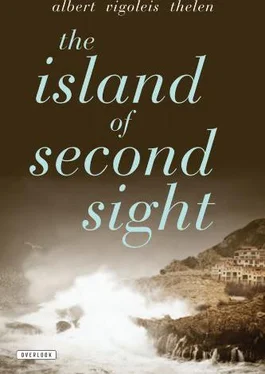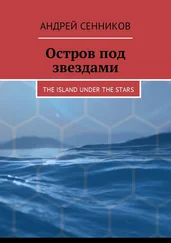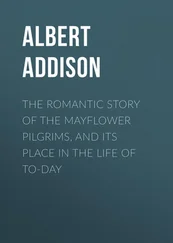Mamú’s daughter, insulted twice over, had gone back to the house. A nurse pushed the patented chaise longue farther down the yard. Auma whispered to us that we should go along with Mamú; the injection would hold for another half hour, and then she would suddenly fall asleep. Mamú doubtless wanted to put Beatrice to the test now — Vigo having passed his with flying colors.
During the minutes that followed, Beatrice was likewise deemed worthy to stand at our new friend’s grave. To gain Mamú’s blessing it was unnecessary for her to break any rules of etiquette — which Beatrice never would have done anyway. She and Mamú had mutual acquaintances in Vienna. Just imagine, Beatrice’s piano teacher Juliusz Wolfsohn — how often hadn’t that man played at Mamú’s little villa on Schwarzenberg Square! Beatrice also got a kiss, a buss on the cheek. But just barely, for just as the ailing woman was bestowing it, she suddenly faded away. If Auma hadn’t alerted us to the medical injection, we would have thought that she had passed away in our arms. Just before she drifted into slumber, she asked us in a final whisper, and in English, “Do you believe in healing by spirit?”
Mamú’s automobile took us home. Her chauffeur, a Mallorcan, had the very same Christian name as the gallant Mallorcan cavalier who was Auma’s suitor. This led to some comical, and at times unpleasant, misunderstandings. As my reader will have guessed, Mamú didn’t die. And because Auma’s suitor, a genuine lawyer, was a daily guest at Mamú’s house, there was no choice but to give the chauffeur another name. Neither the driver nor his mistress had any notion about the magic of names, and so they settled for just plain “Miguel.” They might just as well have chosen “José” or “Francisco,” but José was the cook and Francisco was the gardener.
During the English lessons that followed our visit, Auma had much to tell. We gave her our impressions, and she put in its proper context the question Mamú had asked us — whether we believed in healing by spirit. Mamú, Auma told us, was going to be healed by spirit. By what kind of spirit, I wanted to know. Foolish question!
A Dutch lady, Auma explained, an adherent of Christian Science, had accepted the mission of playing tricks on the medical profession, specifically on that certain German professor. A faith-healer, a German woman, was already contracted for and paid in advance. Now it was only a matter of trust. Mamú, the “terminal” patient, must also have firm belief in a miracle, for otherwise the Great Spirit could be of no avail. We were dealing, after all, with cancer, and this meant that extreme measures were in order. Was it expensive? Yes, but money was no object. A human life was at stake. Of course. And besides, Mamú was a millionaire.
I was suspicious. A Dutch lady? Was it the Dutch lady from the anarchists’ pensión , Mevrouw van Beverwijn? The very same. Did I know her? Hmm… well, yes. And I told Auma that the medium’s husband was suffering from sclerotic kidneys. Couldn’t he be faith-healed too? These Dutch plantation owners surely had enough money for that? Auma said — and she was no doubt right — that the husband probably didn’t believe in the power of prayer. In the absence of true faith, the Dutch lady had told Auma, no amount of prayer, direct or indirect, could be of any help. Old man van Beverwijn was not a believer — that we could all understand. To be married to a woman like that one, and then to believe in anything at all any more — that was too much for science to grapple with, even the Christian variety. That man’s life consisted of nothing but knuckling under to his wife. If he ever dared to resist, he got hissed at. The poor fellow. His marriage was so hopeless that his kidneys were atrophying in response.
Thus our good friend, the ever-alert Mevrouw van Beverwijn, had Mamú’s kidneys as her chief concern. While her own husband’s analogous organs degenerated beyond recall, she devoted her magical talents to those of the American heiress. And lo and behold, Mamú got better! We can’t say that she got all better — she was too old for that, and she had lived too extravagantly for a total and permanent cure. But her health returned to the extent that she was again able to eat and drink whatever she wanted, or almost. She could again enjoy the company of us younger folk, and she avoided older people more and more. I can attest to this transformation, just as I can confirm a “miracle” of Our Lady of Fatima, one that I witnessed later in Lisbon. Certainly the testimony of a non-believer is worth a great deal in cases that involve miracles.
It is beyond doubt that Mamú got better. Were the doctors wrong with their diagnosis? Were the people who lived with Mamú mistaken all along? Mamú herself told it this way: she had faith, and therefore nothing stood in the way of her being healed by the spirit. There was no earthly way of explaining it. Come to think of it, it’s also not possible to explain a poem: one has faith in it, unless it is simply too awful a poem. But what did Mamú, the atheist, have faith in? In the World Spirit? In Don Matías’ pantheism? In the ogress Mevrouw van Beverwijn? No, her faith was in a potent tale told by this Dutch busybody, a hair-raising verhaal of the sort one used to find in old household devotional handbooks, but which actually took place on the plantation owned by the van Beverwijns in the Dutch East Indies. Mamú once told us the story, but I also heard it from the mouth of Mevrouw van Bewerwijn herself. The two versions differed in certain details. Mamú’s version was benign, and not designed to convince anyone. Mevrouw’s variant, on the other hand, coming from a fanatical and evil-minded priestess of the cult, had the ring of Eternal Verity about it: woe to those who will not believe!
On the day before our visit, Mevrouw had arranged a conversation with Mamú, who told her that she was going to die within days. In fluent English, Mevrouw preached Christian Science to Mamú, concealing all the while her own husband’s kidney problem and tossing in, as an example of the healing power of the spirit, a story about a dog.
These Dutch planters had a dog that always went along when they visited neighboring farms. During one of these visits, contrary to their own custom, they tied the dog to the back of their car. On leaving for home they forgot to take the dog back with them into the car. At the time, she wasn’t at all sure how such ghastly negligence was possible, but later she understood it as a form of Divine Intervention. The poor beast was dragged behind their vehicle for many miles, which is to say that the dog suffered horribly in tongue and lung for the entire length of the involuntary sleigh ride. Once arrived at their plantation, the couple discovered the whimpering animal behind their car, half dead, covered with blood, a total mess. His fur had been scoured away over large parts of his body. But the worst damage was to his paws. They had disappeared. Only bloody stumps were left. Native servants nursed the animal, but no one thought he would survive. And yet he didn’t die. He recovered, but as a pathetic cripple.
A nearby planter, who practiced Christian Science and proselytized for the creed, offered his services as a faith-healer for their dog. There were skeptical smiles. The paws had gone, they would not grow back— after all, a dog is not a salamander. But why not let this man of religion do what he wants, they thought. There’s nothing to lose. With his prayers, the healer re-created the dog’s paws and claws. According to Mamú, the healing process lasted but an instant; Mevrouw van Beverwijn herself, on the other hand, said that the Spirit took a month to regenerate the tissues. The photographs that Mevrouw presented as proof of the miracle didn’t show how long it took for the cells to develop into skin and fur and claws. Mijnheer van Beverwijn couldn’t remember at all how long it had taken, although he did remark — albeit not in so many words — that their dog had better luck than his own kidneys. As usual he deferred to his wife. Like a dog.
Читать дальше












